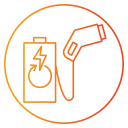Tire Care for Electric Vehicles: What You Need to Know
Chosen theme: Tire Care for Electric Vehicles: What You Need to Know. Welcome to a friendly, practical guide that demystifies EV tire choices, maintenance, and everyday habits. We will blend science, stories, and simple routines so you can drive farther, safer, and quieter. Enjoy the read, and subscribe for more EV-smart tips.

Why EV Tire Care Is Different
Instant torque meets rubber reality
Electric motors deliver power immediately, which can scrub tread faster during enthusiastic launches. Gentle starts save rubber, reduce noise, and keep your range predictable. Try easing into acceleration for a week and notice how the car still feels quick while your tires feel grateful.
Battery weight and load matters
EVs carry heavy battery packs, increasing load on each tire. Choose tires with the correct load index, often marked XL for extra load. Proper load capacity reduces heat buildup, improves stability, and helps avoid shoulder wear during highway curves and city roundabouts.
Regenerative braking changes wear patterns
Regen shifts braking forces to the motors, often increasing front tire wear on front-motor cars or rear wear on rear-motor setups. Rotate on time to even things out. If you adjust regen settings, watch how your wear pattern changes over a few thousand miles.

This is the heading
Lorem ipsum dolor sit amet, consectetur adipiscing elit. Ut elit tellus, luctus nec ullamcorper mattis, pulvinar dapibus leo.

This is the heading
Lorem ipsum dolor sit amet, consectetur adipiscing elit. Ut elit tellus, luctus nec ullamcorper mattis, pulvinar dapibus leo.
Check pressure before driving or after the car rests for several hours. Follow the driver-door sticker, not the sidewall max. A monthly ritual keeps efficiency steady. Add a reminder to your calendar, and share your results with fellow readers to compare seasonal trends.
Pressure, Temperature, and TPMS Essentials
Expect roughly one PSI change for every 10°F shift in ambient temperature. Autumn cool-downs can leave your tires underinflated by morning. After the first cold snap, recheck all four corners, including the often-forgotten rear tires on dual-motor setups.
Pressure, Temperature, and TPMS Essentials

Many EVs benefit from rotations every 5,000–7,500 miles. Directional or staggered fitments may require front-to-back swaps only or dismounting. If you cannot rotate, inspect more often and budget for earlier replacements on the driven axle to avoid unpleasant surprises.

Camber and toe drift after potholes, curbs, or suspension tweaks. A quick alignment check can eliminate inside-edge feathering that ruins tires early. If your steering wheel sits slightly off-center or the car drifts, schedule an alignment before uneven wear locks in.

Modern machines detect heavy spots and tire uniformity issues that cause vibration at highway speeds. Balancing improves comfort and cuts micro-chopping on tread blocks. Ask shops about road-force balancing if you feel a persistent hum at a narrow speed window.
Tread Depth, Wet Safety, and Replacement Timing
Use a gauge or the wear bars between tread ribs. Many experts recommend replacing at 4 mm for wet performance, even though legal limits are lower. Shorter stopping distances in rain are worth it, especially for heavy EVs with strong regen transitions.
Tread Depth, Wet Safety, and Replacement Timing
As grooves shallow, water evacuation suffers. If puddles feel floaty at moderate speeds, your tread may be too low. Slow down, increase following distance, and schedule a tire appointment. Share your wet-weather impressions to help other readers choose smarter.
Tread Depth, Wet Safety, and Replacement Timing
Most tread-area punctures can be professionally patched and plugged from the inside. Sealants may foul TPMS sensors, so read labels before squirting. Sidewall damage remains a no-go. When in doubt, choose safety—tires are cheaper than fenders, sensors, and long waits.
Driving Habits That Save Tires and Extend Range
Ease into power and anticipate traffic lights to coast instead of surge. You will feel calmer, and your tires will show a more even wear pattern. One reader trimmed weekly charging sessions simply by softening launches leaving the neighborhood each morning.
Driving Habits That Save Tires and Extend Range
High regen is great in city traffic, but on wet roads it can unsettle traction if applied abruptly. Adjust levels and feather the pedal. Blending regen with gentle friction braking keeps things stable, extending tire life while preserving a confident feel.


Winter versus summer tires for EVs
Cold temps harden all-season rubber. Dedicated winter tires stay pliable and shorten stops on ice, even at city speeds. In hot months, summer compounds bring sharper steering. Swap early in the season and mark your calendar to avoid last-minute rushes at shops.

Store spare sets the right way
Clean, bag, and stack tires in a cool, dark spot. If mounted on wheels, store horizontally and rotate the stack occasionally. Label positions to track wear. Proper storage prevents flat-spotting and ozone cracking, rewarding you with quiet miles next season.

A quick pre-trip ritual, plus a little story
Check pressures cold, inspect tread and sidewalls, verify torque on lug nuts, and confirm your repair kit is complete. Maya, a reader, avoided a highway delay after spotting a tiny embedded screw during her pre-trip walkaround—five minutes that saved a weekend.
